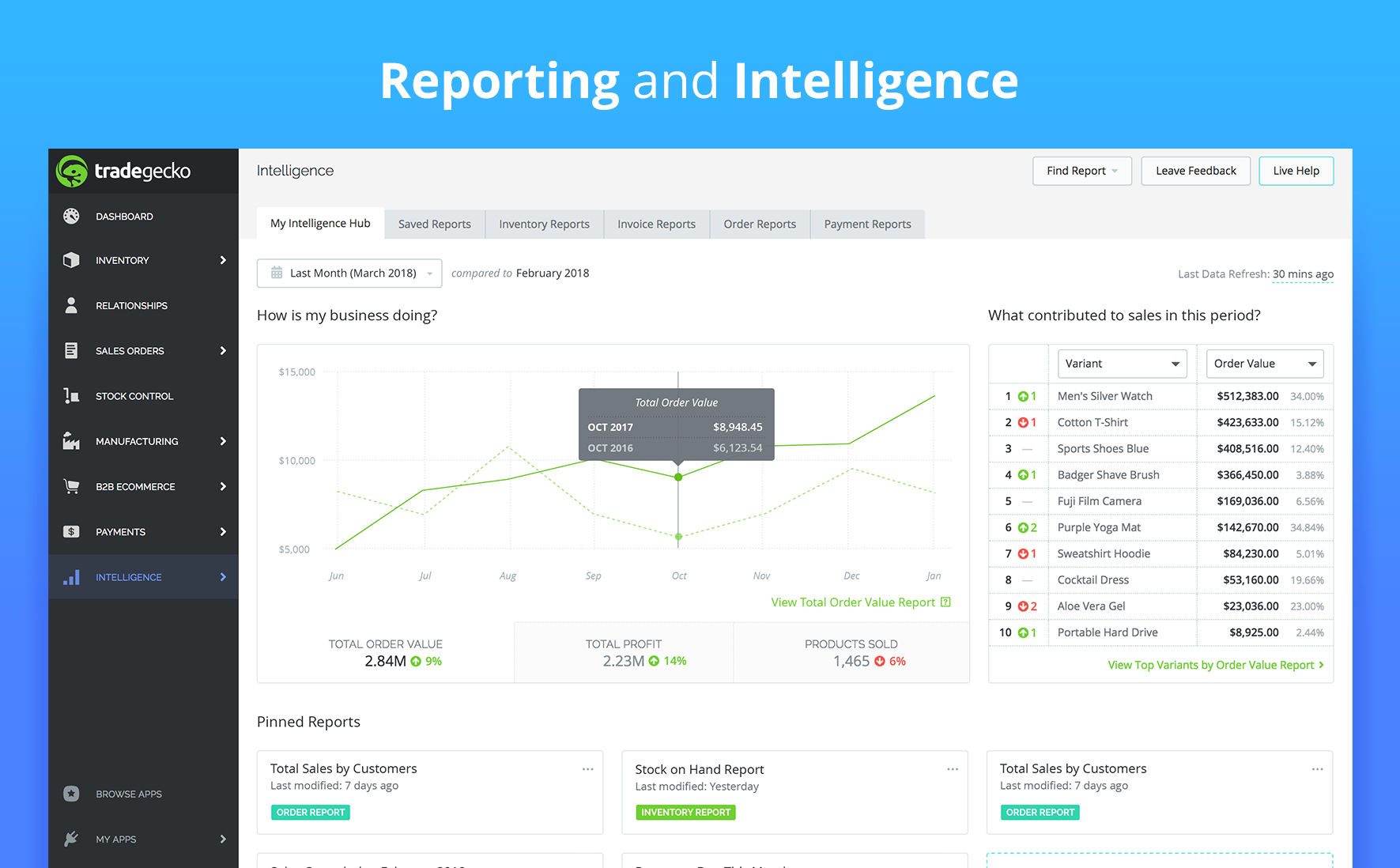TradeGecko by QuickBooks Commerce: Complete Buyer's Guide
AI-driven inventory management platform for multi-channel ecommerce businesses
TradeGecko by QuickBooks Commerce positioned itself as an AI-driven inventory management platform specifically designed for multi-channel ecommerce businesses requiring seamless QuickBooks integration and automated demand forecasting capabilities.
Market Position & Maturity
Market Standing
TradeGecko by QuickBooks Commerce occupied a specialized market niche serving QuickBooks-dependent businesses with multi-channel operations, positioning between enterprise platforms and basic SMB solutions[48][51][54].
Company Maturity
Company maturity indicators showed mixed signals following the Intuit acquisition. While the QuickBooks brand provided enterprise credibility and financial stability, the integration process resulted in significant product changes including mobile app discontinuation and reported support quality decline[51][54].
Strategic Partnerships
Strategic partnerships centered primarily on the QuickBooks ecosystem, providing integration advantages for businesses already committed to Intuit's accounting platform[48][54].
Longevity Assessment
Longevity assessment requires immediate verification given the significant accessibility issues with official product information. The combination of broken official URLs, discontinued mobile functionality, and customer reports of declined support quality indicates potential product discontinuation or major restructuring that buyers must verify before proceeding with evaluation[48][51][54].
Proof of Capabilities
Customer Evidence
A boutique clothing retailer achieved 30% stockout reduction using the platform's automated reordering system, demonstrating measurable inventory optimization in fashion retail environments[40]. Similarly, an electronics retailer reported 40% improvement in order fulfillment speed through multi-channel inventory synchronization, showcasing operational efficiency gains in complex product categories[40].
Quantified Outcomes
Quantified operational outcomes included significant time savings, with a fashion retailer reducing stock reconciliation time from 20 hours to 2 hours weekly[51].
Competitive Wins
Competitive wins appeared concentrated in scenarios requiring native QuickBooks integration, where TradeGecko's seamless accounting synchronization provided clear advantages over competitors requiring complex third-party integrations[48][54].
AI Technology
TradeGecko's AI technology foundation centered on demand forecasting algorithms that processed historical sales data to generate predictive insights at SKU, variant, and warehouse levels[58][59].
Architecture
Integration architecture emphasized native QuickBooks connectivity, eliminating duplicate data entry through real-time synchronization of inventory movements, sales transactions, and financial records[48][54].
Primary Competitors
Direct competitors included Unleashed and Zoho Inventory, both offering AI-powered forecasting capabilities but requiring separate accounting integrations[51][53].
Competitive Advantages
TradeGecko's primary competitive advantage centered on native QuickBooks integration, eliminating duplicate data entry and providing seamless accounting synchronization that competitors required through complex third-party middleware[48][54].
Market Positioning
Market positioning occupied a specialized niche between enterprise platforms and basic SMB solutions, targeting businesses requiring both sophisticated inventory management and seamless accounting synchronization[48][51][54].
Win/Loss Scenarios
Win scenarios for TradeGecko typically involved businesses with established QuickBooks usage, multi-channel operations, and requirements for B2B e-commerce capabilities including customized catalogs and customer-specific pricing structures[46][48][51][54]. Loss scenarios emerged when buyers required barcode scanning, advanced warehouse management, mobile app functionality, or single-channel simplicity that made TradeGecko's complexity unjustifiable[46][48][51][53].
Key Features

Pros & Cons
Use Cases
Integrations
Featured In Articles
Comprehensive analysis of Inventory Management for Ecommerce for Ecommerce businesses and online retailers. Expert evaluation of features, pricing, and implementation.
How We Researched This Guide
About This Guide: This comprehensive analysis is based on extensive competitive intelligence and real-world implementation data from leading AI vendors. StayModern updates this guide quarterly to reflect market developments and vendor performance changes.
59+ verified sources per analysis including official documentation, customer reviews, analyst reports, and industry publications.
- • Vendor documentation & whitepapers
- • Customer testimonials & case studies
- • Third-party analyst assessments
- • Industry benchmarking reports
Standardized assessment framework across 8 key dimensions for objective comparison.
- • Technology capabilities & architecture
- • Market position & customer evidence
- • Implementation experience & support
- • Pricing value & competitive position
Research is refreshed every 90 days to capture market changes and new vendor capabilities.
- • New product releases & features
- • Market positioning changes
- • Customer feedback integration
- • Competitive landscape shifts
Every claim is source-linked with direct citations to original materials for verification.
- • Clickable citation links
- • Original source attribution
- • Date stamps for currency
- • Quality score validation
Analysis follows systematic research protocols with consistent evaluation frameworks.
- • Standardized assessment criteria
- • Multi-source verification process
- • Consistent evaluation methodology
- • Quality assurance protocols
Buyer-focused analysis with transparent methodology and factual accuracy commitment.
- • Objective comparative analysis
- • Transparent research methodology
- • Factual accuracy commitment
- • Continuous quality improvement
Quality Commitment: If you find any inaccuracies in our analysis on this page, please contact us at research@staymodern.ai. We're committed to maintaining the highest standards of research integrity and will investigate and correct any issues promptly.